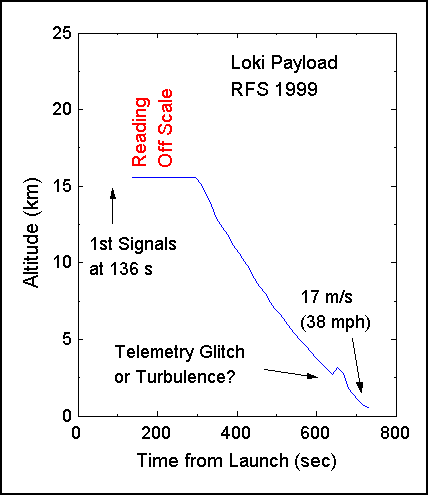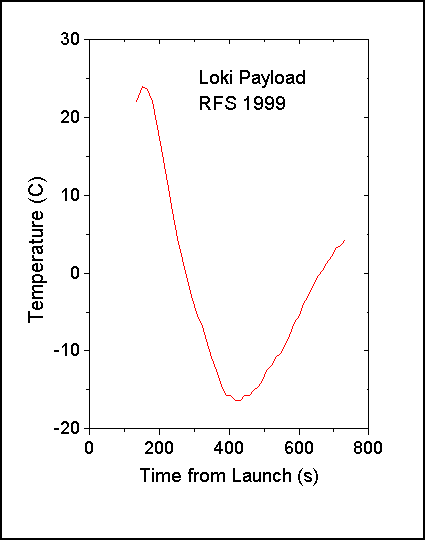
Approximately 10 minutes of data were obtained. During the last 10 seconds, the signal weakened and then disappeared entirely. This is consistent with a payload which has reached the lake and is too far over the horizon to hear when at ground level.
The payload battery voltage remained steady throughout.
The altimeter readings also showed that the payload reached ground level after 10 minutes. The pressure readings were converted to altitude and are shown below.

The payload temperature, measured on the inside skin of the payload casing, showed a behavior similar to what was observed last year for a similar payload. The temperature telemetry, after conversion to degrees Celcius, is shown below.

A 4ft nylon parachute was substituted for the starute for this flight, since in previous years the starutes (which are well past their expiration date) did not deploy properly. A mylar party balloon containing a small amount of air was placed inside the parachute to help the parachute deploy at high altitudes. The theory is that the trapped air in the balloon will inflate the balloon when the payload is injected into the vacuum at peak altitude (approx 35 miles). It is clear that the parachute did not function as was hoped. However, with the failed starutes in previous years we obtained only 8 minutes of telemetry, and with the nylon chute we obtained 10 minutes of data. Hence, we did slightly better with the failed nylon chute than we did before with the failed starutes.
Questions/Comments to:
suits@mtu.edu